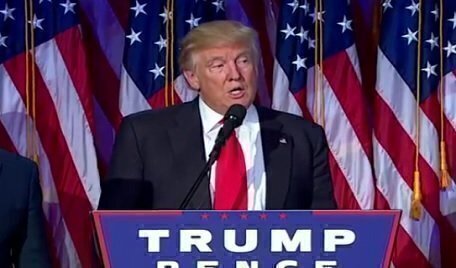December 13 marks a big deadline in the current presidential race, as 50 states and the District of Columbia file certificates confirming Donald Trump as the candidate with the most pledged electors heading into the December 19 electoral college meetings.
 The states are required to file certificates of ascertainment six days prior to the Electoral College voting. Each certificate confirms the presidential election results within a state and lists the slates of electors representing each candidate. Seven copies are made of each state certificate signed by a governor or chief executive and embossed with the state’s seal.
The states are required to file certificates of ascertainment six days prior to the Electoral College voting. Each certificate confirms the presidential election results within a state and lists the slates of electors representing each candidate. Seven copies are made of each state certificate signed by a governor or chief executive and embossed with the state’s seal.
As of Tuesday morning, 23 states had filed their certificates of ascertainment. For example, Michigan’s certificate from its governor, Rick Snyder, confirms that 16 electors from the Republican Party were chosen on Election Day in Michigan, since the GOP had the most votes in that state’s presidential campaign. (The names of Donald Trump and Hillary Clinton aren’t listed on the certificate of ascertainment, just the names of the electors.)
Under federal law 3 U.S. Code § 5, known as the safe harbor provision, each state must determine, or ascertain, its electors and its election results six days before the Electoral College members meet in person. If there is a dispute within a state over electors and election results, and an approved list isn’t sent to Congress by December 13, then Congress would get involved in determining the electors voting for President and Vice President for that state.
The safe harbor deadline was created by the Electoral Count Act of 1887 after the disputed Hayes-Tilden election of 1876. In that election, disputed electors were sent to Congress from four states. Without a law or constitutional provision to determine such a dispute, a special commission of congressional members and Supreme Court Justices chose Hays over Tilden, even though Tilden won the popular vote.
The 1887 law says that Congress must initially accept electors approved by the state before the safe-harbor deadline. If there is no certificate of ascertainment from a state, the House and Senate must agree on a slate of electors to accept. If they don’t agree, then the governor of the state in question makes the final decision.
On December 19 of this election year, electors will meet at each state capital to cast their votes. Each state then sends its endorsed, official vote count certificate to the Vice President (acting as President of the Senate), state officials, the federal court that had jurisdiction over the state capital area, and the federal Archivist. The vote certificates must be received in Washington by December 28.
On January 6, 2017, the new Congress convenes in Washington, D.C., for the official Electoral College vote count. The Vice President will open the vote certificates and pass them to four members of Congress, who count the votes. If there is a majority winner with at least 270 electoral votes and there are no objections filed by members of Congress, the Presidential election is certified and over.
As of today, Trump is expected to have 306 electoral votes, compared with 232 votes for Hillary Clinton. A winning candidate needs 270 votes. Unless there are an unprecedented number of faithless electors who switch votes on December 19, the certificates of ascertainment finalized on December 13 are the first official acts of communication between the states and Congress confirming the winner of a presidential election.
Scott Bomboy is the editor in chief of the National Constitution Center.







